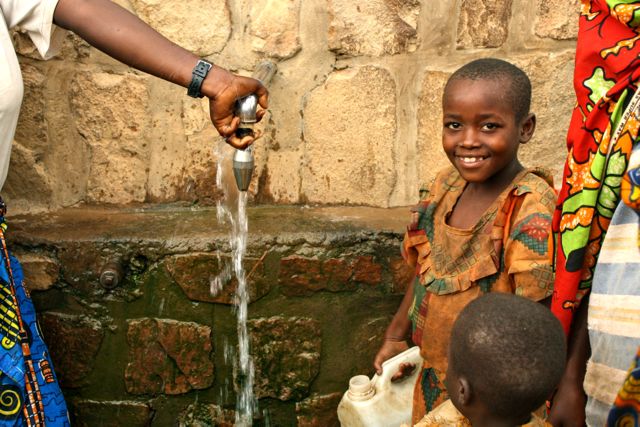I’m no professional with a camera. Yet a few weeks ago I found myself adjusting the shutter speed of a Nikon D200 as I took a portrait of a girl smiling in front of a well for a professional photography assignment. The setting was Cankuzo, a jaw-droppingly scenic province of Burundi six hours from my current hometown of Bujumbura. A generous friend had loaned me the camera, and another generous friend, Bjorn, had given me the opportunity to shoot the 2013 calendar for the nonprofit he works for, my lack of credentials notwithstanding.
A decent camera and some knowledge of how to use it have made me the resident photographer at my organization, the Society for Women against AIDS in Africa. Whenever I photograph a SWAA initiative, whether a food distribution or sexual health training, I’m inundated with requests for photos from those present. Taking photos of beneficiaries and showing these photos to them on my camera’s display is a way to connect, an avenue into conversation: I feel I’ve contributed something small to the person I’m talking to before I begin asking questions and gathering information about how SWAA is doing.
When I shot the calendar, the focus of my work shifted entirely to finding and taking good photos. Bjorn facilitated the conversation with staff and beneficiaries while I searched for the best visual representation of an adult literacy class, best lighting for a portrait of a mother and child, best candid of the construction of a community garden. Playing the role of photographer more purely, I thought more deeply about what it means to be a sensitive, respectful one. Photography can feel one-sided. How to do it in a way that that respects the dignity of every subject? A short list:
1. Always ask. Seems obvious, but despite high enthusiasm for photos in this corner of the world, not everyone wants to be in one. Ask first, and ask in the local language. I can’t say much in Kirundi, but I do know “Hello, my name is Hayley. Is a photo okay? Thank you!”
2. If possible, provide more information about where the photos will end up. When we could, Bjorn and I worked with an interpreter who explained in Kirundi that we were there on behalf of Bjorn’s organization taking photos for its calendar.
3. Don’t forget to show the photo after you’ve taken it. Some of the people we met had never gotten their photos taken before and were excited to see the result.
A final thought on sensitive photography, a sort of golden rule, taken from the National Press Photographers Association’s Code of Ethics: “Be complete and provide context when photographing or recording subjects. Avoid stereotyping individuals and groups…Treat all subjects with respect and dignity.” In the context of nonprofit work as well as journalism, strive to see people as people rather than photo opportunities; look for the non-obvious shots, photographs that show a full range of human experience and not just human need or suffering. Ask, inform, show, respect: a checklist for better photos and better interactions.

